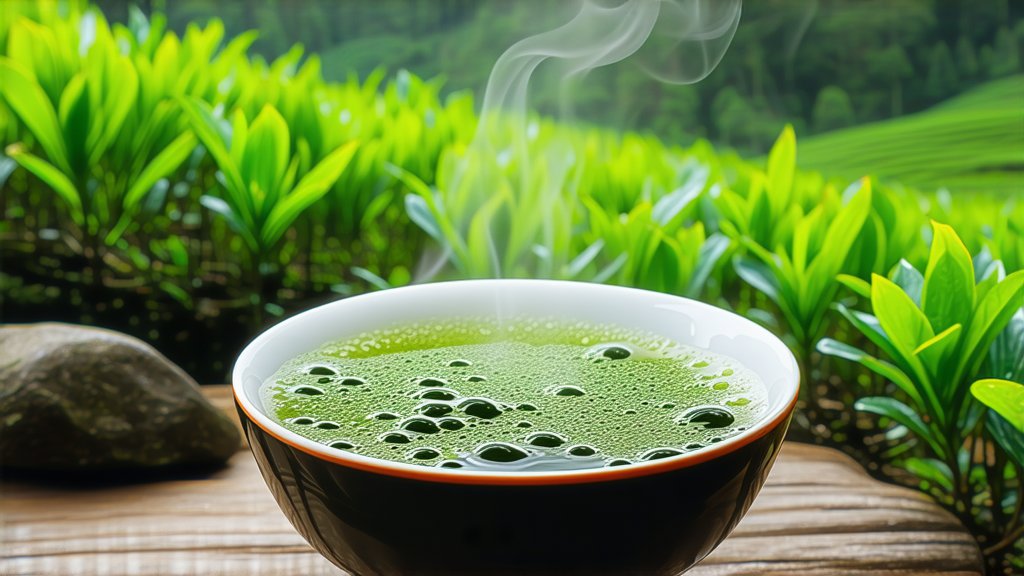
Tie Guan Yin, also known as Iron Goddess of Mercy, is a revered variety within the vast family of Chinese oolong teas. This article aims to provide an in-depth exploration of its history, types, production techniques, and the art of tasting, offering a glimpse into the rich tapestry of Chinese tea culture to international readers.
History of Tie Guan Yin
The origins of Tie Guan Yin date back to the Qing Dynasty, specifically to the 18th century in the Anxi county of Fujian province. Legend has it that a poor farmer named Wei, while clearing the land for cultivation, discovered a tea plant unlike any he had seen before. He nurtured the plant and later used its leaves to create a tea that was so fragrant and flavorful that it became known as Tie Guan Yin, or Iron Goddess of Mercy, in honor of the goddess Guanyin, who is often depicted as a benevolent figure with a heart of mercy.
Types of Tie Guan Yin
Tie Guan Yin is categorized into two main types based on the degree of oxidation and roasting: light-fermented and heavy-fermented.
-
Light-fermented Tie Guan Yin: This type is characterized by a lighter oxidation process, typically around 10-20%. The leaves are greener, and the tea has a more floral and fruity aroma with a lighter body. It is often preferred for its delicate taste and is considered closer to green tea in character.
-
Heavy-fermented Tie Guan Yin: With a higher oxidation level, ranging from 30-60%, this variety has a darker leaf color and a more robust, toasty flavor. It is often aged, which can mellow the flavors and add complexity over time.
Crafting Tie Guan Yin
The production of Tie Guan Yin is a meticulous process that involves several key steps:
-
Picking: The leaves are handpicked, usually in the early morning when the dew is still on the leaves. The top two leaves and a bud are plucked, ensuring the tenderest and most flavorful part of the plant.
-
Withering: The leaves are spread out to wither, a process that reduces their moisture content and initiates the chemical changes that will occur during fermentation.
-
Shaking: A unique step in Tie Guan Yin production, the leaves are shaken to cause bruising, which aids in the oxidation process and contributes to the tea's flavor profile.
-
Fermentation: The leaves are then left to ferment, which can range from light to heavy depending on the desired outcome. This is where the tea's color and flavor begin to develop.
-
Killing Green: The fermentation is stopped by heating the leaves, a process known as "killing green," which prevents over-fermentation and locks in the tea's character.
-
Roling: The leaves are rolled and shaped, which helps to release the oils and further develop the tea's aroma.
-
Roasting: Finally, the leaves are roasted to dry them out and to add a final layer of flavor. The degree of roasting can vary, influencing the final taste of the tea.
Tasting Tie Guan Yin
Tasting Tie Guan Yin is an experience that engages all the senses. Here are some steps to appreciate this tea fully:
-
Aroma: Before brewing, take a moment to appreciate the dry leaf aroma. The scent can range from floral and fruity in light-fermented varieties to more toasted and nutty in heavy-fermented ones.
-
Brewing: Use water that is just off the boil (around 95°C or 203°F) and allow the tea to steep for 1-3 minutes, depending on personal taste preferences.
-
Color: Observe the color of the brewed tea. Light-fermented Tie Guan Yin will have a lighter, more golden hue, while heavy-fermented varieties will be darker, almost amber.
-
Taste: Sip the tea and notice the flavors that unfold. Light-fermented Tie Guan Yin often has notes of orchids and fruits, while heavy-fermented Tie Guan Yin can offer more earthy, roasted flavors.
-
Aftertaste: The lingering taste after swallowing, known as the "finish," is an important aspect of Tie Guan Yin. A good Tie Guan Yin should have a long, pleasant aftertaste that leaves you wanting more.